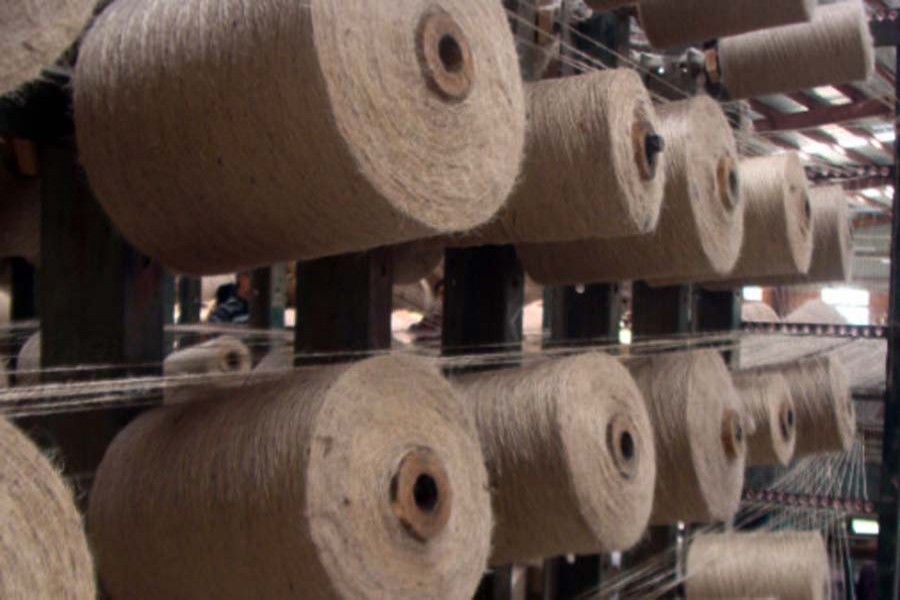When the Prime Minister said the other day that her government was determined to bring back the golden days of jute, the golden fibre that once fetched 90 per cent of the country's foreign revenue, she, of course, didn't mean the resurgence of jute to that unlikely proportion -- accounting alone for most foreign exchange earnings. What the PM emphasised was tapping the optimal potential of jute, clearly making the point that it was far from being explored. To further qualify her statement, the PM at the inaugural function of the National Jute Day 2019 and the Diversified Jute Products Fair said, "Jute is such a product, nothing of which is wasted. So, why it will count losses … I don't want to hear (any) loss (from it) and attention will have to be given to how the industry could be made profitable." Referring to the incentives for the private sector to boost production and export of jute and jute goods, she called upon all concerned to take effective steps for making the jute sector profitable to sustain the industry.
It is a fact that the country's jute sector is facing many problems -- some indeed highly challenging. Default bank loans, mounting stockpiles, export slump have been causing serious difficulties for the industry. It has been reported that the total bank loans availed of by the jute sector stand at around Tk 15.0 billion, a good portion of which has now become default. Stockpiles have hit a nine-year high. Down-turn in exports by nearly 20 per cent in the last fiscal owing to declining overseas demand from major markets has left things more uncertain than in the recent past. Depressed international market and domestic demands have forced more than a dozen mills to shut down in the past few years, and those that are in operation have drastically reduced production.
The problems with the jute sector are also seen as a mix of maladies relating to productivity, product development and marketing. There was hardly any systematic plan for continuous research to develop and diversify jute products in keeping with consumer tastes and preferences at home and abroad.
Jute, no doubt, suffered much neglect over the decades due mainly to improper planning. In fact, high prospect of this fibre as the most echo-friendly and cheaply available one was always around the corner. Stray initiatives were there, but lack of concerted efforts and financing was the main impediment in materialising those as commercially viable. As a result, despite being the second largest producer of raw jute, Bangladesh is still in the age-old sack business, that too without much of a variety. The jute mills under the domain of the BJMC have been passing stress-free days as public entities with little or no urge to innovate new products are content with only the traditional sacks. As for the private sector, it remains mostly busy exporting raw jute.
It is commonly acknowledged that the only way the country's jute industry can shed much of its sluggishness is by producing more and more diversified products consistent with consumers' preferences. It is more about product development, innovation and adaptation than just production of more traditional products or dishing out funds to energise the state-owned sick mills. In order for the desired diversification to take place, the government needs to work out a systematic plan which, among others, should provide ample scope for research and development.
Some developments have emerged lately. The innovation of jute poly bag is a remarkable one, and it must be hailed as a commendable accomplishment. Market testing of the product would hopefully provide useful feedbacks to further work on it to go for commercial production. Earlier, introduction of the mandatory use of jute bags for a number of products, especially grains, including paddy, rice, wheat, maize, fertiliser, sugar, spices etc has also brought about a boost to energise the sector. A new variety of jute called Snow White has been reportedly developed by the country's jute researchers. Unlike other jute fibres, the fibres derived from Snow White do not require bleaching, and it has all the potential of being commercially used in threads, fabrics and garments.
While these promise good days for the jute industry, the fact remains that there is no short-cut to revamp the sector. It needs comprehensive planning on how to go about. While modern technology is a must, large-scale investment in R&D should be in place to produce value-added diversified products. This is not to demean the sack business, but explore the true potential the golden fibre is capable of delivering to the economy.


